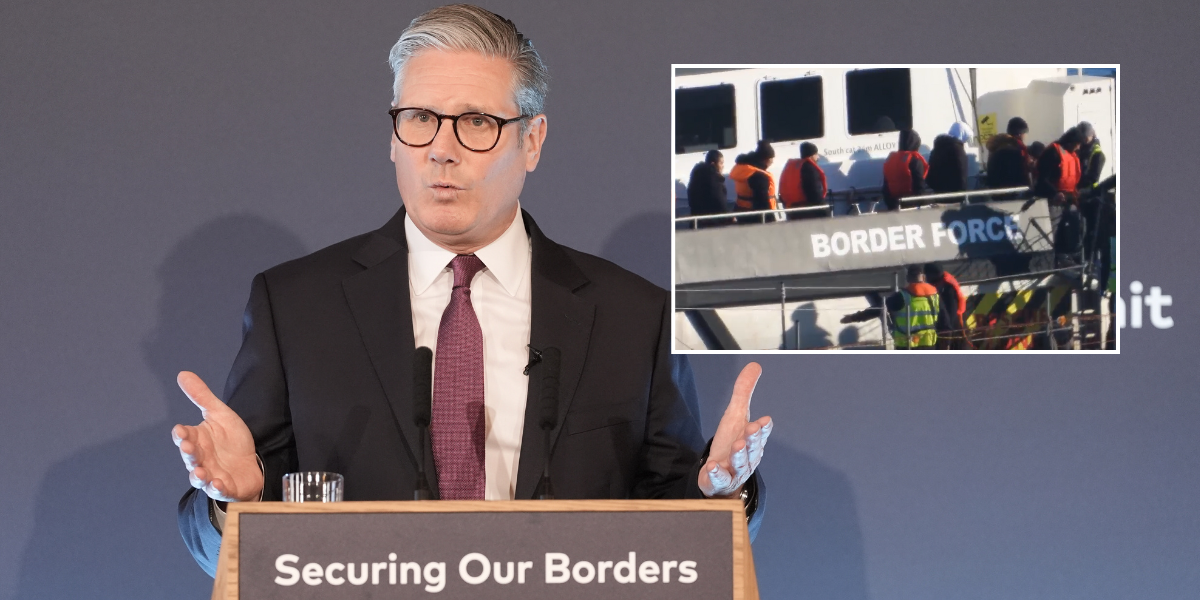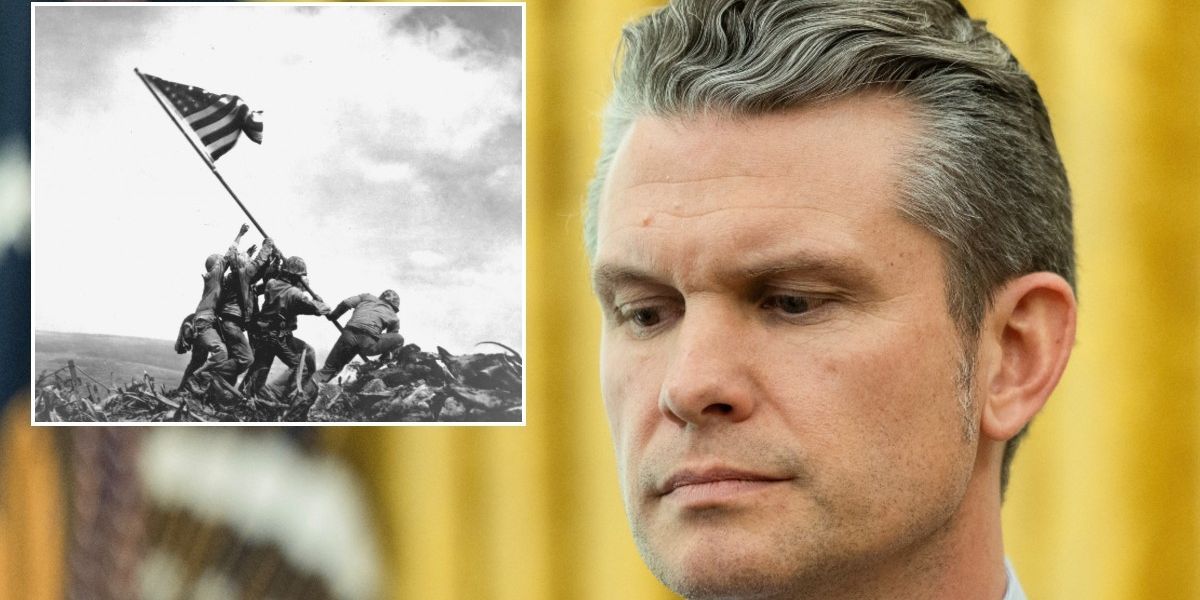The 80th anniversary commemoration of Iwo Jima on Saturday is set to be overshadowed by controversy after the Pentagon removed the battle’s most iconic image from its website in amid row over diversity.
The famous photograph of six marines raising the American flag on Mount Suribachi was deleted this month on orders from US Defence Secretary Pete Hegseth.
The removal sparked diplomatic tensions between the US and Japan at a time when America’s commitment to Asian security appears increasingly uncertain.
The offending element in the photograph was not the flag itself, but a description focusing on Ira Hayes, a Pima Indian who was one of the six soldiers pictured.
The photograph of the US Marines raising the Star-Spangled Banner after the battle of Iwo Jima was removed by Pete Hegseth
GETTY
Hayes had become a symbol of Native American heroism during the war.
The removal was part of Hegseth’s broader effort to erase all traces of the previous administration’s policy of diversity, equity and inclusion (DEI).
Numerous articles about Native American service members were also purged from the Pentagon’s website.
During the Battle of Iwo Jima, Navajo code talkers sent over 800 messages that proved crucial to American success.
LATEST DEVELOPMENTS:
The photograph was removed on the orders of US Defense Secretary Pete Hegseth as part of a crackdown on diversity
REUTERS
Japanese intelligence intercepted many of these communications but could not decipher them.
Before Pearl Harbour, Imperial Japan had dispatched agents to study Native American languages, aware they had been used in the First World War against Germany.
The Navajo language, however, due to its complexity and unique linguistic elements, proved impenetrable to Japanese intelligence efforts.
The battle itself saw 100,000 US troops storm the positions of 22,000 Japanese imperial soldiers.
The Japanese defenders had constructed a complex system of tunnels and cave defences across the island.
The fighting was brutal, with almost 7,000 Americans killed in action.
Only about 1,000 Japanese soldiers survived the battle.
The strategic significance of the victory has remained embedded in American consciousness, later immortalised in two films directed by Clint Eastwood.
The image is also immortalised by a statue erected in Arlington Cemetery
TIM SLOAN/AFP via GETTY IMAGES
John Ullyot, a Pentagon spokesman, has refused to backtrack on the image removal, praising staff for their “rapid compliance” with the directive.
The media backlash has been significant as the weekend commemorations approach.
In response, Donald Trump issued a Presidential Proclamation supporting the heroes of Iwo Jima.
The commemorations, which Hegseth will attend on the island this Saturday, will also serve as a venue for tense security talks between the US and Japan.
The US defence secretary will meet veterans for a photo opportunity and visit Mount Suribachi, where the victory flag was raised.
Japanese diplomats hope Hegseth, an outspoken champion of Trump’s America First policy, will prove capable of viewing Asia-Pacific security from their perspective.



